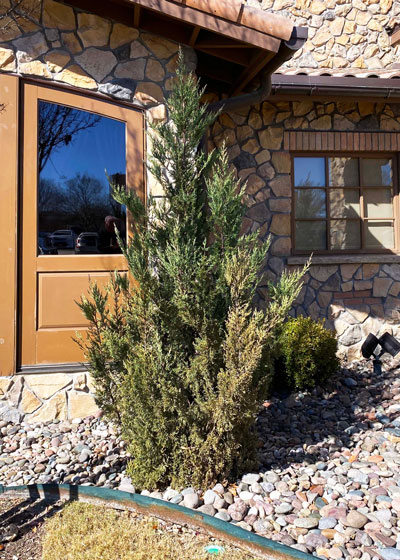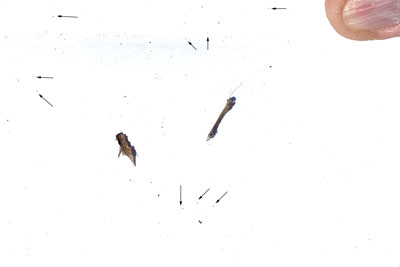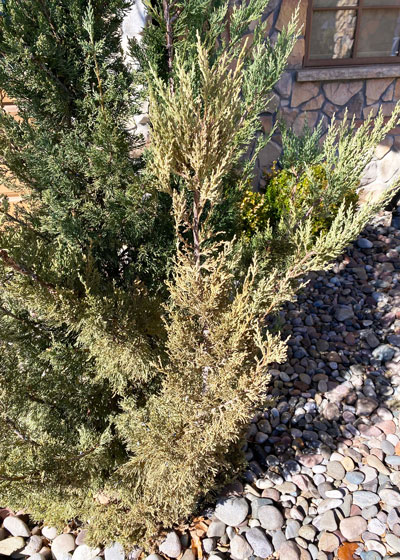Spider Mites on Junipers
We were ordering take out recently. As we pulled into the parking spot, I said to my wife, “Right there is a juniper in serious distress.” I could tell that spider mites were at work.

The first symptom of spider mite damage is tiny tan mottling of the leaves. With junipers, the needles are so tiny that you really don’t notice the color change until it becomes more severe. Entire branches become grayish tan and fine webbing may even be evident. It will almost always start at the bottom of the plant and then flush upward and outward. Spider mites will attack upright junipers and I have seen them devastate beds of groundcover junipers as well.
While my wife was inside picking up the order, I found a small piece of white paper and thumped one of the branches onto it. I looked closely, and sure enough, there were the mites clambering around. It took about 20 seconds for them to realize they had been jostled loose, but then I could easily see 20 or 30 moving about freely.

Spider mites are exceptionally tiny. I always tell people you could put 20 or 30 of them on the head of a pin shoulder to shoulder. They are much easier to see with low-powered magnification of a hand lens or a magnifying glass.
I did some online research and found several university writeups on how to identify and control them. Most, however, were from cooler parts of the country where mites are less of a problem. They suggested merely washing them off with a garden hose. I have never found that to be sufficient in our climate. I recommend that gardeners find products labeled for control of two-spotted or red spider mites and then apply the spray carefully to both bottom and top leaf surfaces. Spider mites typically hang out on the bottoms of leaves where they do their piercing and sucking work.

The one odd thing about seeing spider mites on junipers and other cone-bearing plants at this time of year is that we normally think of mites as a hot-weather problem. For some reason the mites that attack conifers are most common in January and February, at least in my personal observations.
